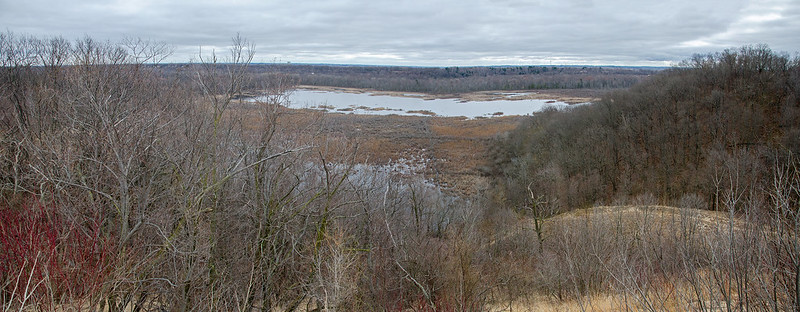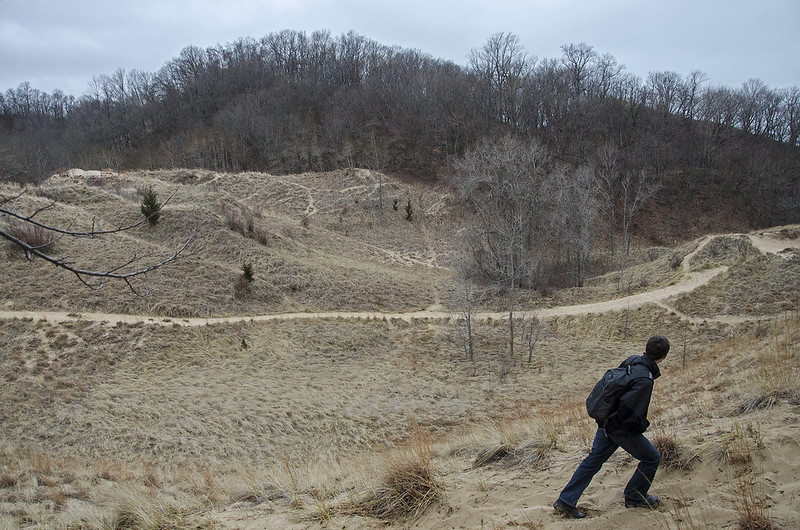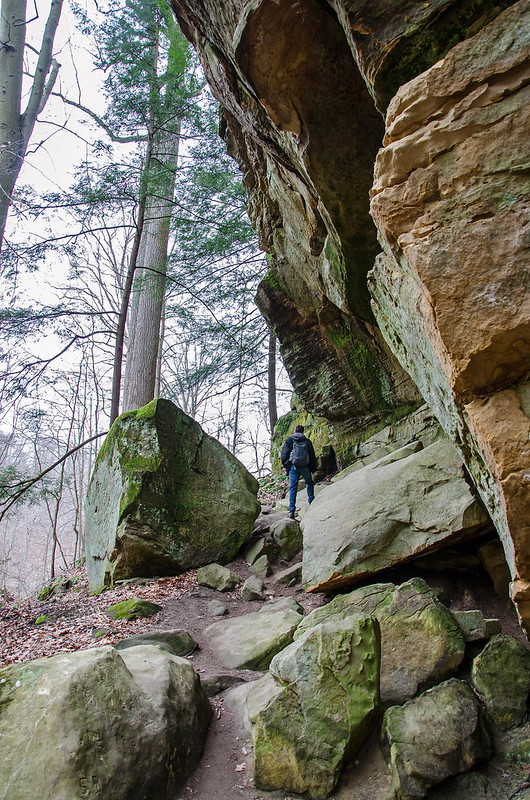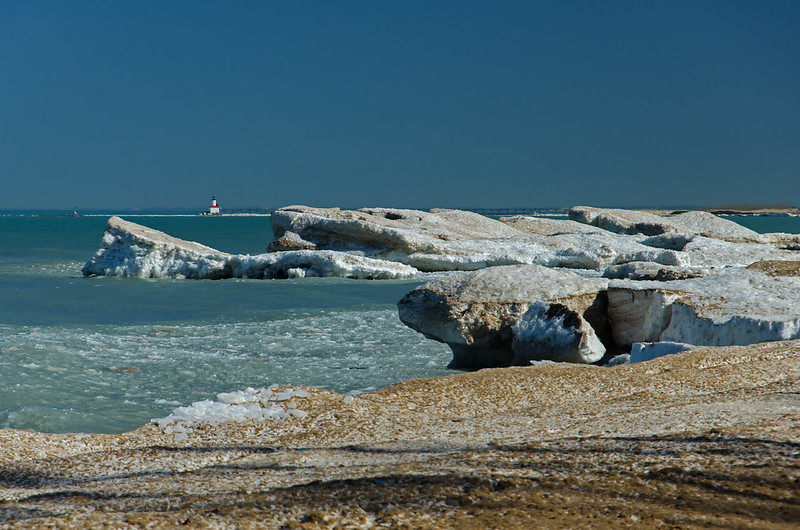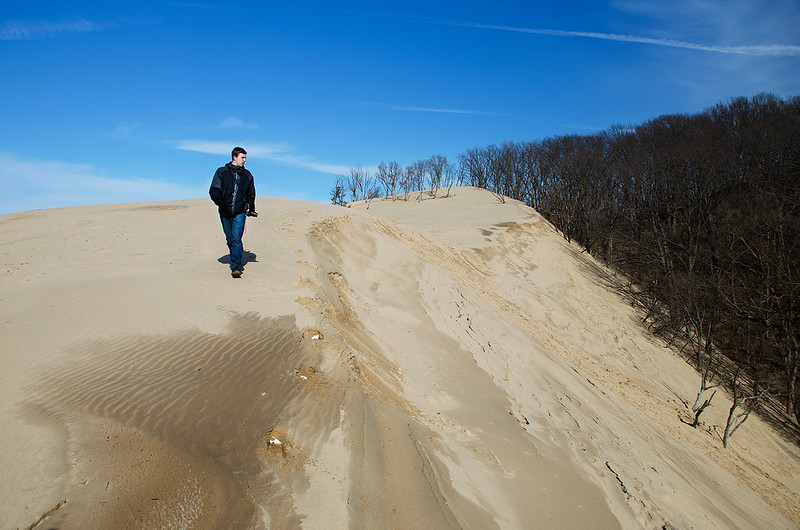
Back up to the summit from the beach, we came upon an area of the dunes where a few landscapes converged. The sandy, grassy dunes met with the wooded dune and both met with the wetlands and lake in the distance. The landscape converged at many different angles, all seeming to meet in this area.

The path down toward the woods was loose and steep, but if you run, taking big steps, you get down very quickly. This is not the place you want to fall while holding a camera; cameras don't take to sand very well.

Once down, we continued our hike through the rolling dunes. The marram grass was still matted down by the winter snows, but there were signs it was greening up. Or, was the grass matted down by the black bear spotted in the park over the last few weeks? Black bears have not been seen in this area since the 1870's, but late last year and this spring, one has been on the prowl in the park and nearby neighborhoods. Perhaps he just came out of dormancy and was watching our every move as we hiked the meandering trails of Grand Mere State Park.


